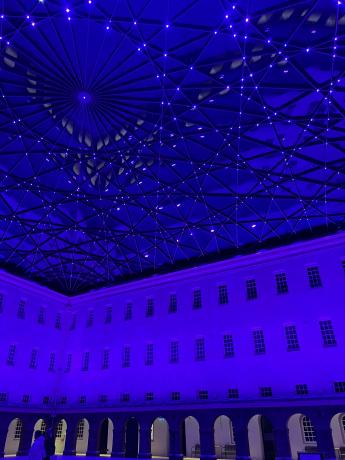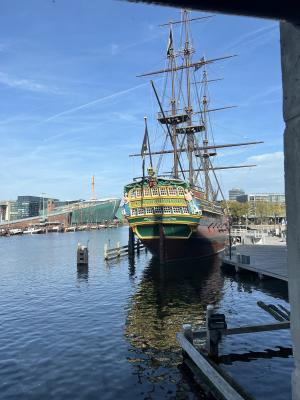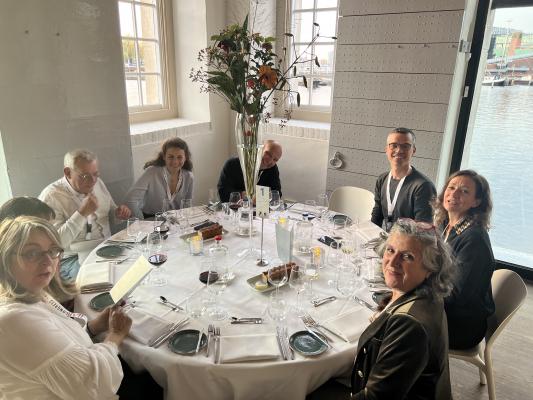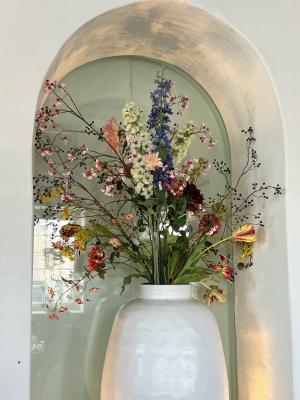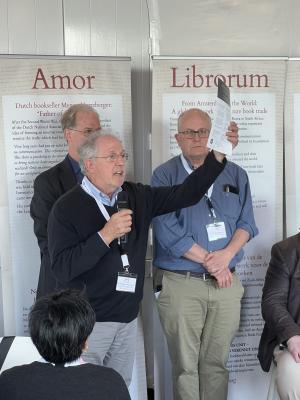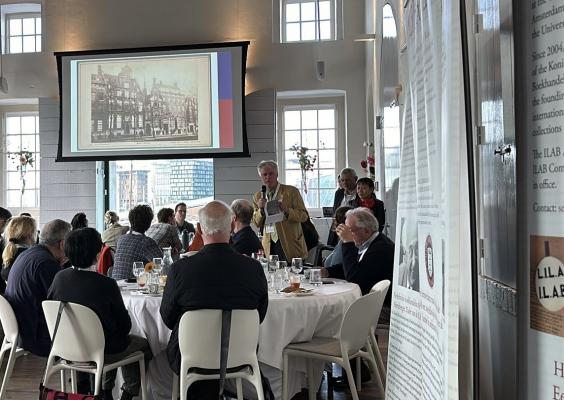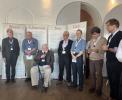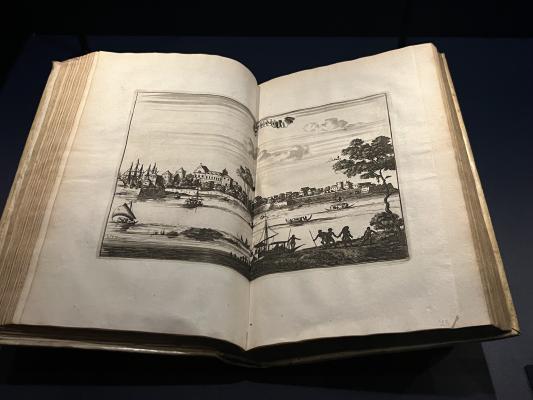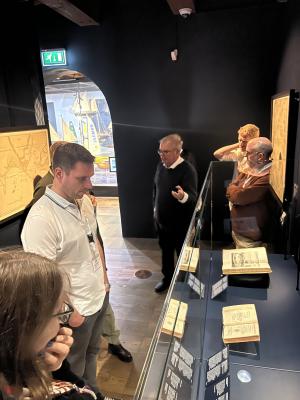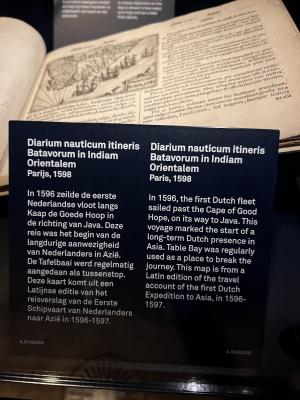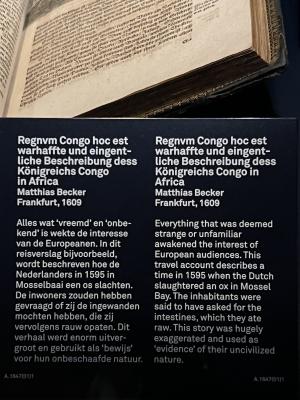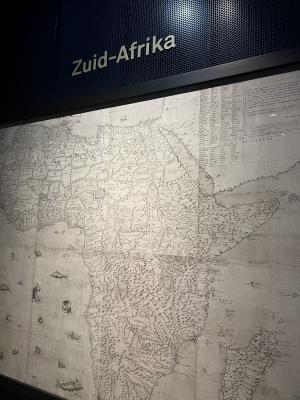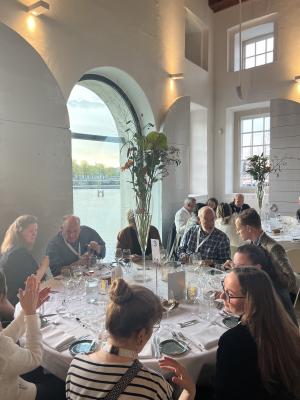News & Updates Nederlandsche Vereeniging van Antiquaren
Day 2 of the 2024 ILAB Congress: Smaller collections around Amsterdam & Treasures at the Dutch Maritime Museum
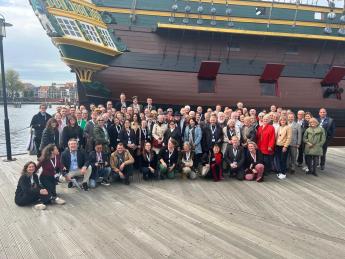
The world as we see it today has been largely shaped by the maps and coastal charts created by Dutch cartographers. From the late 16th century, Dutch sailors travelled further from home and their discoveries formed the basis for the maps and charts they produced. Over time, these maps became more detailed and accurate. They weren't just for navigation - they were a source of power. Knowing an area meant that ships could be sent out, whether for trade or military purposes.
Amsterdam therefore naturally possesses one of the largest maritime collections, which would be the focus of the second day of the congress.
But before congress participants began exploring the library and map collection of the world-famous Dutch Maritime Museum, the morning was spent in groups visiting various smaller collections around the city.
The editor's group had the wonderful opportunity to visit "The House of Six".
A private home still inhabited by the Six family today, the town house is also a museum that welcomes visitors to view the Six Collection.
The Six family was a successful cloth weaver who moved their business to Amsterdam in 1586, then a growing metropolis in the north of the Republic.
In 1655, Jan Six I married Margaretha Tulp, the daughter of a famous doctor who later became mayor of Amsterdam. Jan Six was less interested in the family business than in art and culture. He went on the Grand Tour of Italy and was an accomplished writer of essays, poetry and plays. For a short time in 1691 he even held the office of mayor. Six I maintained relationships with painters, including Rembrandt van Rijn, who painted his portrait in 1654 and produced a series of etchings and drawings by and for him. These works form the basis of the present Six Collection.
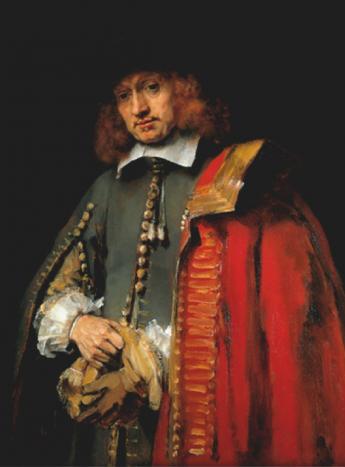
The house itself was first located on the Herengracht, but when a new railway line required the demolition of the building in 1915, the family moved the entire interior to its new location on Amstel.
Since the 17th century, the Six family have opened their house and collection, including works by Rembrandt, Paulus Potter and Saenredam, to those interested in the arts.
Arine van der Steur, part of the congress organisers' team and also the collection's archivist, was an excellent guide, sharing stories and highlights of the collection with her ILAB colleagues. Unfortunately, it was not possible to take pictures as the family still lives there. Visits can be arranged on request, more details HERE.
The family guest book apparently dates back to 1809, spanning 25 volumes and including names such as Rembrandt and Vondel, along with notable signatures such as President Roosevelt and Tsar Alexander I of Russia. It now includes the names of ILAB booksellers!

Moving on to the Maritime Museum, booksellers enjoyed a lunch in the most beautiful setting followed by the ILAB General Assembly and a lecture on maritime maps and the collections of the University of Amsterdam by Reinder Storm, curator of cartography, geography and travel at the Allard Pierson.
At every Congress, the ILAB Committee finds a moment to talk to all booksellers about the work and projects that occupy the League. The venue at the Maritime Museum was a great location for this meeting, which introduced the newly elected ILAB Committee and a number of projects that the Committee and Secretariat have been working on over the past year: the ILAB Symposium in Paris in June earlier this year, advocacy work with UNESCO or the European Commission on behalf of the rare book trade, initiatives to support education in our trade, the ILAB Breslauer Prize, security issues or legal challenges.
Pictured below: Mats Petersson (Vice President), Scott DeWolfe, Angus O'Neill (ILAB President), Robert Frew (Treasurer), Philipp Penka, Mario Giupponi (Past President), Nicolas Malais and Dan de Simone (Secretary of the ILAB Breslauer Prize for Bibliography). Not present at the congress was the new committee member Liam McGahern.
The afternoon was reserved for a visit of the museum's library.
Diederik Wilderman, curator of marine & library collections, welcomed various groups of booksellers at the library.
The library of the Amsterdam Scheepvaartmuseum was founded in 1916. It is one of the most important maritime libraries in the world, housing a vast collection of books, manuscripts, maps, and other materials related to maritime history.
Mr Wilderman explained that the Maritime Museum holds this large collection, partly because the early members of the board were book lovers. When the museum was founded, the aim was not only to display ships' instruments, paintings or technical models, but also to collect all the books on these subjects - books on maritime history from the 16th century onwards. Not just one copy of a famous traveller's book, but all editions: first, second, third, foreign, and so on.
Maritime matters are an international matter, the interest was always what other countries were developing at the time. Therefore the library also acquired books on maritime history of the neighbouring countries, especially the British, the French or the Portuguese and to some extent, the Germans. A lot of technical literature is held at the collection such as books on navigation or ship building but also traveller accounts or descriptions of the overseas world.
In the first decades, until the 1950s, the library collected mainly books, atlases and globes. Mr Wilderman was proud to emphasise that a survey carried out a few years ago ranked the museum's maritime collection fourth in the world, behind the extensive collections of the British Library, the University of Amsterdam and the Library of Congress.
A catalogue of the library was published in the 1960s and is still sometimes referred to. Another important catalogue refers to the collection of maritime books and manuscripts that once belonged to Willem H. Mensingh, an important Dutch book collector. His collection was acquired by the museum in the 1920s and became an important part of the museum's holdings, including 12 editions of Ptolemy. The catalogue, published at his expense, documents the books, maps and charts collected by Mensingh, with particular emphasis on maritime history, navigation, exploration and shipbuilding.
In 1989, a catalogue of books on the art of navigation was published by one of the main collectors, Ernst Crone, an important collector of maritime books and instruments.
These catalogues, although now largely digitised, remain important references for scholars and booksellers.
Mr Wilderman then kindly took the booksellers on a tour of the museum's exhibition of the highlights of the collection.
After a wonderful dinner at the museum, ILAB booksellers left this memorable venue through the contemporary courtyard with its roof, only finished in 2021, which represents a compass rose or star map, symbolizing navigation and maritime exploration.
A striking ending to this remarkable day.
